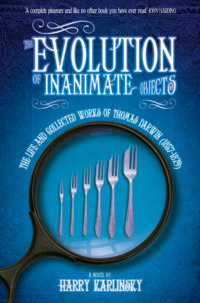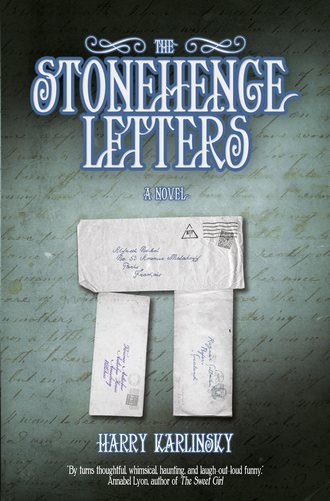
Полная версия
The Stonehenge Letters
With bitter insight, Nobel accepted his unwanted isolation as central to his melancholic outlook and the frequent episodes of depression that were particularly prevalent in his middle years. Nobel would refer to these periods of despair as visits from the ‘spirits of Niflheim’, the cold and misty afterworld in Nordic mythology and the location of Hel, to where those who failed to die a heroic death were banished.
Remarkably, Nobel failed to consider the root cause of his isolation, which was directly attributable to the loss of the many family members and colleagues who had died sudden violent deaths (i.e., were blown to smithereens) as a result of their association with him. In 1856, the Crimean War had ended unfavourably for Russia, in no small part due to the failure of Immanuel’s ineffectual mines to cut off crucial enemy shipping lanes in the Baltic Sea. The financial circumstances of the Nobel family declined accordingly. After retreating hastily to Stockholm with only limited resources, Alfred and his father continued their experiments with nitroglycerine. On 3 September 1864, five individuals died in a horrific explosion; among the casualties was Emil Nobel, Alfred’s younger brother. To compound the tragedy, a grieving Immanuel suffered a debilitating stroke just one month later. Yet within two months of Emil’s death, Alfred was defiantly exporting the world’s first source of industrial-grade nitroglycerine. Due to the concerns of government officials about the dangers of the unstable compound, its preparation was restricted to a barge anchored on a lake located beyond Stockholm’s city limits. Despite such safety measures, a distressing loss of lives would continue to accompany the commercial production of nitroglycerine, which Nobel quickly extended by establishing factories throughout Europe. Although Nobel refused to express remorse in public (possibly on the advice of his lawyers), the deaths of so many of his employees and innocent bystanders would have a lingering impact on his sensitive disposition.fn7
Nobel’s poor physical health would also constantly undermine his fragile temperament. As a fragile and sickly child, Nobel frequented health spas while still in his late teens. Troubled by chronic indigestion, he was once diagnosed with scurvy, and for a period of months consumed only horseradish and grape juice. In his late forties, Nobel developed severe migraine headaches, and then, more seriously, the onset of paroxysmal spasms of chest pain. Though the latter symptoms were initially assumed to be hysterical in nature, he was eventually diagnosed as suffering from a debilitating form of angina pectoris. As he aged, his attacks worsened. While visiting Paris in October 1896 Nobel had a particularly severe episode. As he drolly wrote, Within two months of returning to his winter residence in San Remo, Italy, Nobel suffered a catastrophic cerebral haemorrhage. On 10 December 1896, agitated, semi-paralysed and attended only by Italian servants unable to comprehend his last words, which were uttered in Swedish, Nobel died as he had feared, trapped within his body, frightened and alone.
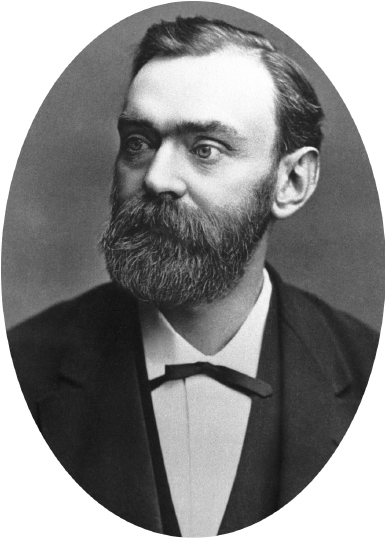
Figure 3. Alfred Nobel.
Isn’t it the irony of fate that I have been prescribed nitroglycerine to be taken internally! They call it Trinitrin, so as not to scare the chemist and the public.fn8
CHAPTER 2
LILLJEQVIST AND SOHLMAN
The challenge of implementing Nobel’s will fell to his two designated executors.
As Executors of my testamentary dispositions, I hereby appoint Mr Ragnar Sohlman, resident at Bofors, Värmland, and Mr Rudolf Lilljequist, 31 Malmskillnadsgatan, Stockholm, and at Bengtsfors near Uddevalla. To compensate for their pains and attention, I grant to Mr Ragnar Sohlman, who will presumably have to devote most time to this matter, One Hundred Thousand Crowns, and to Mr Rudolf Lilljequist, Fifty Thousand Crowns.
Nobel had only recently met Rudolf Lilljeqvist, a Swedish civil engineer, in May of 1895. Their initial discussions had revolved around the electrolytic decomposition of salt. Nobel and Lilljeqvist developed an instant rapport, likely due to a shared antipathy towards lawyers.fn9 Years of litigation involving alleged patent infringements, charges of industrial espionage, and a series of wrongful death lawsuits had left Nobel with a fierce aversion to those in the legal profession. Lilljeqvist was equally wary, a victim of incompetent lawyers who had undermined his previous efforts to court potential investors. After only three months of congenial negotiations, conducted without legal advice, Nobel agreed to fund Lilljeqvist’s proposal to establish an electrochemical plant in Bengtsfors, a village in north-west Sweden. Nobel had obviously been deeply impressed with Lilljeqvist, and despite their brief acquaintance, had developed an immediate confidence in his new partner’s acumen and ethical principles.
Although Lilljeqvist subsequently declined Nobel’s invitation to take up a well-paid managerial position at a weapons foundry (AB Bofors, see here), the two men engaged in a second collaboration just prior to Nobel’s death. The impetus was the unpredictable and explosive nature of nitroglycerine at temperatures higher than 180 degrees Celsius. As the chemical production of nitroglycerine created heat, the temperature of the nitration vats within Nobel’s factories required careful monitoring. In practical terms, this meant that one employee was assigned the task of staring at a thermometer throughout the production process. Not surprisingly, the hypnotic nature of the activity frequently induced sleep, and lethal gaffes were prevalent.
In an effort to reduce fatalities, Nobel had first mandated that the relevant workers must complete their shifts without shoes and wearing only a single sock. The principle was simple: Nobel knew from the privations of his early childhood that it was impossible to fall asleep if one foot was colder than the other. It was only upon learning that this prescription contravened nascent employee safety regulations that Nobel rescinded the directive. To gain a first-hand impression of the inherent challenge, Nobel then joined his own labour force. Struggling to stay alert during one shift, an exhausted Nobel realised that it would require a high degree of wakefulness for a worker to remain upright while seated on an unstable surface; should a worker still manage to fall asleep, there would be an obligatory tumble and abrupt arousal. Nobel subsequently conceived of the exact solution – the one-legged stool – while enduring the last act of Wagner’s Die Meistersinger von Nürnberg. Nobel patented his invention and Lilljeqvist undertook its manufacture. Despite worker protests, the one-legged wooden stool became an immediate and effective industry standard.fn10
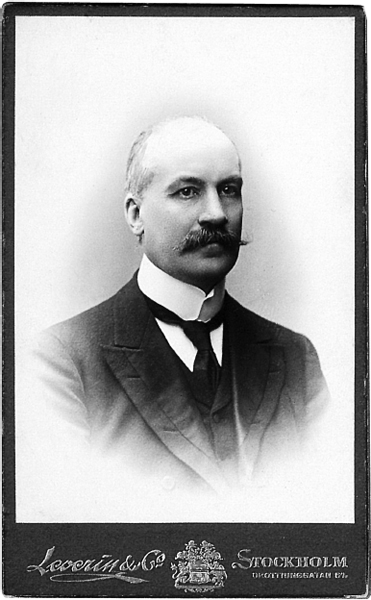
Figure 4. Rudolf Lilljeqvist.
The other executor appointed in Nobel’s will was Ragnar Sohlman. In contrast to his purely professional relationship with Lilljeqvist, Nobel’s association with Sohlman was more personal. Sohlman, a Swedish-born chemical engineer like Nobel, was only twenty-five years old at the time of Nobel’s death. The two men had first met three years earlier. In 1893, Sohlman had moved to Paris to begin work as Nobel’s personal assistant. After efficiently reorganising Nobel’s reference library and his extensive files, Sohlman was precipitously transferred to Nobel’s new laboratory in San Remo, Italy. Sohlman had little choice but to move: the French government had accused Nobel of stealing a formula from a French competitor and had forcibly closed his laboratory on the outskirts of Paris.

Figure 5. A one-legged stool.
Sohlman’s tenure at San Remo was brief. Within a year of his arrival, Nobel acquired controlling interest in AB Bofors, a large Swedish ironworks and weapons foundry located on the outskirts of Karlskoga, a town in western Sweden. As part of the purchase price, Nobel also acquired ownership of Björkborn Manor, a comfortable but slightly worn residence on the grounds of the property. With the assistance of his nephew Hjalmer, Nobel planned to refurbish the Manor as his permanent home. After years of an unsettled and itinerant lifestyle, Nobel had finally grown nostalgic for the country of his birth and had resolved to spend his remaining years in Sweden.
Both Nobel and Sohlman moved from San Remo to Karlskoga in early 1895. Sohlman had, by then, favourably married. With Nobel’s permission, he had taken a short holiday the preceding year to pursue his courtship of Ragnhild Strom, a Norwegian woman he had met through family friends. Once living in Karlskoga, the young couple began to dine with Nobel, an arrangement then unusual in an employer–employee relationship. Soon, Nobel was inviting Sohlman to address him as Father.fn11 Though Sohlman was too embarrassed to do so, he did begin to greet Nobel by his Christian name and to refer to himself as ‘your affectionate friend R’ when signing his letters to Nobel.
Nobel’s tender feelings for Sohlman would prove lifesaving. In the early 1890s, Salomon August Andrée, Sweden’s first balloonist, had roused patriotic fervour by proposing to pilot a balloon to the North Pole in order to claim the iconic destination in the name of Sweden. Anticipating the arrival of aerial warfare, Nobel envisioned that manned balloons might one day become effective vehicles to drop bombs on enemy positions. Eager to participate in all aspects of the explosives industry, Nobel became one of Andrée’s earliest and most generous financial backers.
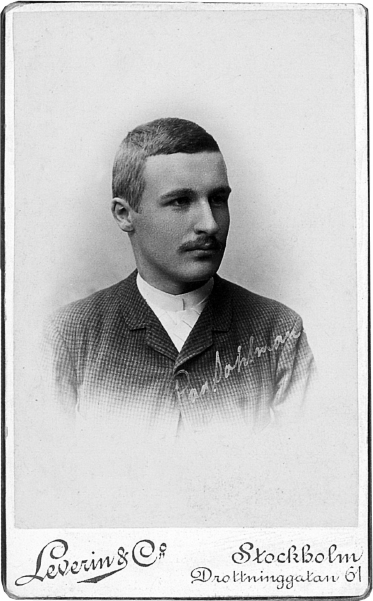
Figure 6. Ragnar Sohlman.
In the summer of 1896, Andrée visited Bofors at Nobel’s invitation. During the ensuing discussions, in which Sohlman also participated, Nobel encouraged Andrée to persevere with his dream of Arctic sovereignty. Earlier that spring, Andrée’s first attempt to launch his balloon had failed and there were critics who now viewed the entire notion as foolhardy. Nobel’s optimism, however, was infectious and a re-energised Andrée assured Nobel he would re-attempt the flight in the coming year. As Andrée’s large hydrogen balloon required a three-man crew, Sohlman volunteered – unexpectedly – to join the proposed expedition. The following day Nobel, concerned for Sohlman’s safety, spoke to Andrée privately and threatened to withdraw his financial support should the flight proceed with Sohlman on board. Andrée duly informed Sohlman that, in light of Sohlman’s meteorological inexperience, his participation would no longer be possible on what would ultimately prove to be a doomed expedition.fn12
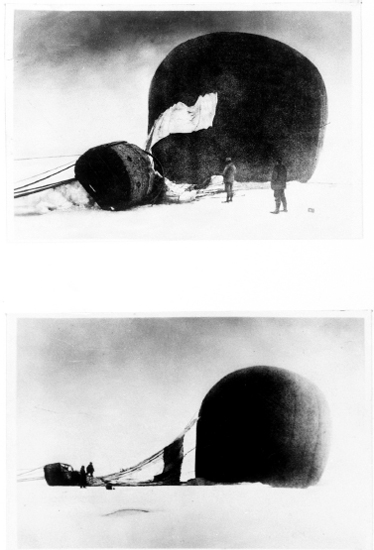
Figure 7. S. A. Andrée’s doomed Arctic balloon expedition (1897).
Nobel summered at Björkborn Manor in 1895 and 1896. Although he had initially intended to live year-round within its poorly insulated quarters, Nobel found he could no longer endure the bitterly cold Swedish winters. To avoid the inhospitable weather, he would stay instead at his Italian residence in San Remo. On 7 December 1896, in a letter mailed from Villa San Remo, Nobel would write his last words to Sohlman:
Alas, my health is so poor again that I can only scribble these words with difficulty. But I shall come back as soon as possible to the subjects which interest us both,
Affectionately, Alfred Nobel
One day later, Nobel collapsed into a state of semi-consciousness. Although Sohlman was alerted of Nobel’s abrupt deterioration and immediately left Sweden for Italy, he did not arrive until shortly after Nobel’s death. It was there, while assisting with Nobel’s funeral arrangements, that Sohlman first learned of the provisions of Nobel’s will and his unexpected responsibilities. When Lilljeqvist was informed by telegram one day later that he was also an executor of Nobel’s testamentary dispositions, he was as surprised as Sohlman.
CHAPTER 3
NOBEL’S LAST WILL AND TESTAMENT
Nobel’s Last Will and Testament was dated 27 November 1895. An unexpectedly informal document, the will was handwritten in Swedish and signed by four Swedish witnesses at the Swedish–Norwegian Club in Paris in early December 1895. After specifying individual bequests to eighteen family members, servants, and acquaintances, the will read as follows:
The whole of my remaining realizable estate shall be dealt with in the following way: the capital, invested in safe securities by my executors, shall constitute a fund, the interest on which shall be annually distributed in the form of prizes to those who, during the preceding year, shall have conferred the greatest benefit to mankind. The said interest shall be divided into five equal parts, which shall be apportioned as follows: one part to the person who shall have made the most important discovery or invention within the field of physics; one part to the person who shall have made the most important chemical discovery or improvement; one part to the person who shall have made the most important discovery within the domain of physiology or medicine; one part to the person who shall have produced in the field of literature the most outstanding work in an ideal direction; and one part to the person who shall have done the most or the best work for fraternity between nations, for the abolition or reduction of standing armies and for the holding and promotion of peace congresses. The prize for physics and chemistry shall be awarded by the Swedish Academy of Sciences; that for physiological or medical works by Karolinska Institutet in Stockholm; that for literature by the Academy in Stockholm; and that for champions of peace by a committee of five persons to be elected by the Norwegian Storting. It is my express wish that in awarding the prizes no consideration whatever shall be given to the nationality of the candidates, but that the most worthy shall receive the prize, whether he be a Scandinavian or not.
It was a remarkable philanthropic vision. As Sohlman and Lilljeqvist immediately recognised, however, the will – stubbornly constructed by Nobel without legal advice – contained significant deficiencies that might easily undermine its realisation. For assistance, the two executors turned to Carl Lindhagen, a young lawyer who would later serve a long tenure as Chief Magistrate of Stockholm. The three men quickly established that Sohlman, despite substantial reservations on his part, would take on the role of principal executor. Lilljeqvist would be available to provide advice and encouragement, but his new business interests in Bengtsfors would preclude more active involvement. Lindhagen would serve as legal counsel.fn13
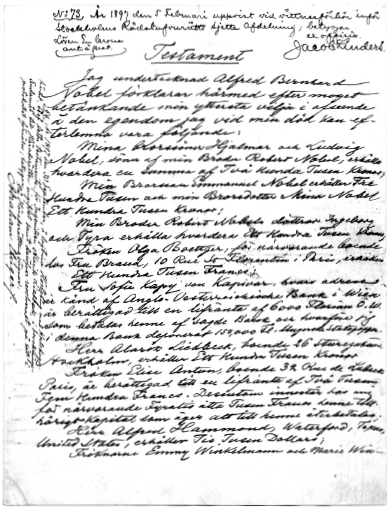
Figure 8. The first page of Alfred Nobel’s will.
As Lindhagen predicted, the successful execution of the will would require resolution of three contentious issues. The most problematic of these involved the legal clarification of Nobel’s last permanent residence, his so-called ‘true’ domicile. This determination would, in turn, establish which court in which country would grant probate. As Nobel’s intention had been to live out his years in Björkborn Manor, Lindhagen advised Sohlman and Lilljeqvist to apply for probate in a Swedish court. It was not certain, however, whether Nobel would be declared a resident of Sweden and that, a fortiori, a Swedish court would adjudicate the validity and terms of the will. The courts would consider, for example, that Nobel also owned a mansion in Paris and a country home in Italy at the time of his death. Should Paris be determined to have been Nobel’s true domicile, as the French authorities immediately requested, the financial consequences would be particularly severe. In addition to the crushing inheritance taxes imposed in France, the legality of the entire will would also be in jeopardy due to the much more stringent laws of the Code Napoléon.
A second prickly subject was the immediate opposition of disappointed relatives who bitterly viewed their inheritance as insufficient. To add to the perceived slight, an earlier will which Nobel had rescinded had contained far more generous bequests to individual heirs than the current iteration. Nobel’s family was also concerned that the interest-generating capital required to fund the annual prizes appeared to depend on immediately liquidating Nobel’s vast financial assets. Selling all investments would jeopardise the financial stability of a number of Nobel family holdings, particularly that of the large Russian oil company started by Nobel’s two older brothers.
The third potential impasse was the astonishing fact that Nobel had never discussed with any representatives of the institutions he had named in his will his intention that they administer the prizes he sought to establish. The cooperation of any, let alone all, of these institutional bodies was far from certain. To further embroil matters, the designation of the Norwegian Storting (Parliament) to award the peace prize drew a strong political backlash. Nobel had written his will in 1895, at a time when Sweden and Norway were still united as one country. By the end of 1896, the dissolution of their fragile political union was imminent. The inclusion of Norway now bordered on treason, inciting Sweden’s reigning King Oscar II to petition Nobel’s nephew and most influential heir, Emanuel Nobel, to challenge the will on patriotic grounds. One of the few family members who was a strong advocate for his uncle’s wishes, Emanuel was, by the time he received the king’s request, defiant:
Your Majesty – I will not expose my family to the risk of reproaches in future for having appropriated funds which rightfully belonged to deserving scientists.
Remarkably, all obstacles were eventually resolved. The courts sided with the executors and the will was favourably probated in Sweden. Thanks to financial concessions and the support of Emanuel Nobel, all branches of the Nobel family eventually agreed to the will’s provisions.fn14 Each prize-awarding body also came to accept the terms of the will, and collaborated on establishing clearer instructions related to the distribution of the prizes. Nobel’s assets were liquidated and a single fund was constituted that would be managed by an entity referred to as the Nobel Foundation. This foundation would also be responsible for overseeing the Nobel Prize ceremonies.
On 29 June 1900, the Swedish government approved the statutes of the Nobel Foundation by royal ordinance. These contained the clarifications related to the wording of the will and such details as the establishment of the prize-awarding Nobel Committees. On 10 December 1901, precisely five years after the death of Alfred Nobel, the first Nobel Prizes were awarded: in physics to Wilhelm Conrad Röntgen, in chemistry to Jacobus H. van ’t Hoff, in medicine to Emil von Behring, and in literature to Sully Prudhomme. The Nobel Peace Prize was awarded jointly to Jean Henry Dunant and Frédéric Passy. Each laureate received a diploma, a gold medal and a significant sum of money; later that day, a celebratory banquet was held in their honour at Stockholm’s Grand Hôtel. As Ragnar Sohlman so elegantly stated, ‘The long struggle over Nobel’s will was now at an end’.
It was Freud who said the optimist sees the rose and not its thorns.
CHAPTER 4
‘FRAU SOFIE’ AND COUNTESS BERTHA KINSKY
With the establishment of the Nobel Foundation in 1900, Sohlman’s responsibilities as principal executor diminished substantially. No longer required to consolidate and administer Nobel’s financial assets, Sohlman could finally turn to the systematic organisation of Nobel’s personal files. These were extensive, as Nobel saved all incoming letters. It was also his habit to travel with a portable hectograph, about the size of a large briefcase. With little effort, Nobel could methodically reproduce onionskin duplicates of all outgoing correspondence, which he then kept in a large number of carelessly organised folders and folio boxes. Most letters were written in Swedish or Russian, but Nobel also corresponded in French, English and German. Sohlman, also a competent multilinguist due to Nobel’s influence and the nature of their work together, was soon surprised to find that he now faced the challenging task of cataloguing over ten thousand documents
Regrettably, Sohlman was already familiar with one specific folder that he himself had stamped ‘Legal and Confidential’ two years earlier. Within it, there were 216 letters Nobel had written to a Miss Sofie Hess. There were also forty letters from Sofie to Nobel, a single well-written telegram, a photogravure of the couple, as well as one affidavit assuring the Nobel estate that Sofie ‘had no further claims against the estate apart from the annual income designated to her’. Of note, some of Nobel’s letters to Sofie were addressed to ‘Dear, pretty child’, ‘Little Sweetheart’, ‘My dearest Sofiechen’, and even ‘Frau Sofie Nobel’.
The awkward details were as follows: In 1876, a forty-three-year-old Nobel had met the much younger Sofie – then representing herself as eighteen years oldfn15 – at a spa in a small Austrian resort. Sofie was working in a florist shop but aspired to advance beyond her lower-middle-class Viennese background. Nobel, enthralled by Sofie’s beauty, offered assistance. Assuming a role akin to an avuncular patron, Nobel installed his protégée in a small but comfortable Paris apartment. Sofie was then provided with a substantial allowance intended to further her education. Although Sofie neglected her studies, Nobel fell in love. The infatuation would last fifteen years, fluctuating substantially in its intensity and warmth. At times, Nobel was jealous;fn16 at other times he was more concerned that Sofie was wasting her life with an ‘old philosopher’ like himself. Nobel’s largesse could also waver. Most often indulgent, he was also capable of railing against Sofie’s extravagant and heavily subsidised lifestyle.
Though Nobel would insist to others that his association with Sofie was platonic, the two often travelled together and, with Nobel’s collusion, Sofie would at times represent herself as Madame Nobel. Ultimately, their relationship cooled and by the late 1880s, Sofie had returned to Austria and begun openly to entertain other men. In July 1891, she had a daughter out of wedlock. She eventually married the Hungarian father, a Captain von Kapivar, in 1895. By then, Nobel had established a fixed annuity of six thousand Hungarian florins for Sofie, albeit with the following admonition:
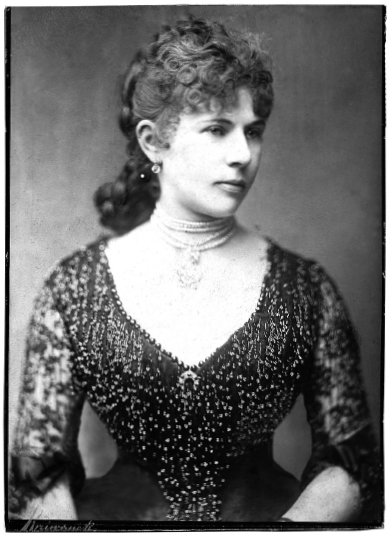
Figure 9. Sofie Hess.
It is clear to everyone who knows the circumstances that you have been extremely lucky. Most men in my position would have calmly left you to the misery you have brought upon yourself.
Despite the generous support, both Sofie and Captain von Kapivar began to beg Nobel for an increase in her allowance. With the assistance of a lawyer, Sofie’s petitions continued after Nobel’s death. These were now directed to Nobel’s executors (i.e., Sohlman) and with a more threatening tone: if increased funds were not forthcoming, Nobel’s highly personal letters to Sofie would be sold for publication to the highest bidder. Sohlman, anxious to avoid a scandal, negotiated a one-time settlement in return for the affidavit referenced above as well as all outstanding letters from Nobel in Sofie’s possession.


